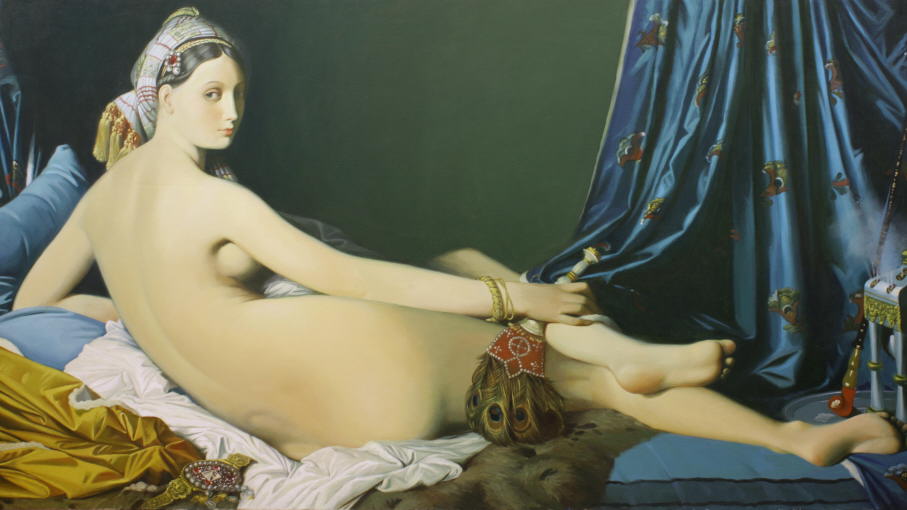Neoclassicism is the name given to Western movements in the decorative and visual arts, literature, theater, music, and architecture that draw inspiration from the “classical” art and culture of Ancient Greece or Ancient Rome. The main Neoclassical movement coincided with the 18th century Age of Enlightenment, and continued into the early 19th century, latterly competing with Romanticism. In architecture, the style continued throughout the 19th and 20th centuries and into the 21st.
Neoclassical Artists:
Jacques-Louis David (1748-1825) was an influential French painter in the Neoclassical style, considered to be the preeminent painter of the era. David later became an active supporter of the French Revolution and was effectively a dictator of the arts under the French Republic.
Jean Auguste Dominique Ingres (1780-1867) was a French Neoclassical painter. During the interim period he supported himself by painting portraits in a style that was already rhythmic in line and indicative of great powers of character observation. While in Italy, Ingres spent four years in Florence studying Italian primitives, Greek vase paintings, and Flaxman’s illustrations for Homer. He then spent fourteen years in Rome, where he came more and more under the influence of Raphael. Ingres’s portraits were recognized as his greatest legacy.

Romanticism was a complex artistic, literary and intellectual movement that originated in the second half of the 18th century in Europe, and gained strength in reaction to the Industrial Revolution. It was embodied most strongly in the visual arts, music, and literature, but had a major impact on historiography, education and the natural sciences. Its effect on politics was considerable and complex; while for much of the peak Romantic period it was associated with liberalism and radicalism, in the long term its effect on the growth of nationalism was probably more significant.
Key Romantic Artists:
Romantic artists were those inspired by the ideals of the Romantic philosophical and cultural movement, which sought to revolt against the established values of society and religion. The most famous Romantic artists were Eugene Delacroix and Francisco Goya.
Francisco Goya (1746-1828) was a Spanish romantic painter and printmaker. Through his works he was both a commentator on and chronicler of his era. The subversive imaginative element in his art, as well as his bold handling of paint, provided a model for the work of artists of later generations, notably Manet, Picasso and Francis Bacon.
Eugène Delacroix (1798-1863) was a French Romantic artist regarded from the outset of his career as the leader of the French Romantic school. Delacroix’s use of expressive brushstrokes and his study of the optical effects of colour profoundly shaped the work of the Impressionists, while his passion for the exotic inspired the artists of the Symbolist movement.
